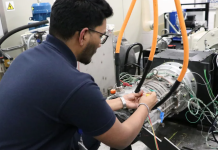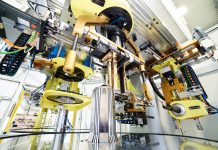A U.S. research team at Texas A&M University has developed an electric motor that completely avoids the use of rare earths, a crucial but controversial category of materials due to their high environmental impact and geopolitically complex extraction.
The project, led by Professor Hamid Toliyat, introduces a sustainable and highly competitive alternative to traditional rare earth-based motors. These materials, such as the neodymium used in permanent magnets, are notoriously expensive and often mined using unethical methods. In contrast, the new American technology aims to use common and readily available materials such as copper. This approach reduces costs, increases sustainability and makes the system less dependent on markets dominated by a few countries, such as China.
The innovative design, developed and tested through preliminary simulations and the production of a prototype, has been shown to achieve performance comparable to engines using rare earths, but eliminating the performance and environmental limitations typical of traditional technologies.

Sustainability and economic independence
By replacing rare earths with copper coils for the rotating part, the new engine becomes a more environmentally friendly and politically independent alternative. This not only reduces the devastating impacts on the environment caused by rare earth mining, but also reduces dependence on foreign suppliers. However, it opens a new debate about the growing need for copper, demand for which is already rising for applications such as wind turbines and photovoltaic cells. According to recent estimates, 42.5 million tons of copper would be needed to electrify 30 percent of the world’s car fleet by 2030.
Funding and market outlook
The project has received about $500,000 from the university’s Advancing Discovery to Market program, intended to accelerate the transition from research to commercialization. Several patents have already been acquired, and the team plans to launch a startup to bring this technology to market in areas ranging from electric vehicles to wind turbines.










